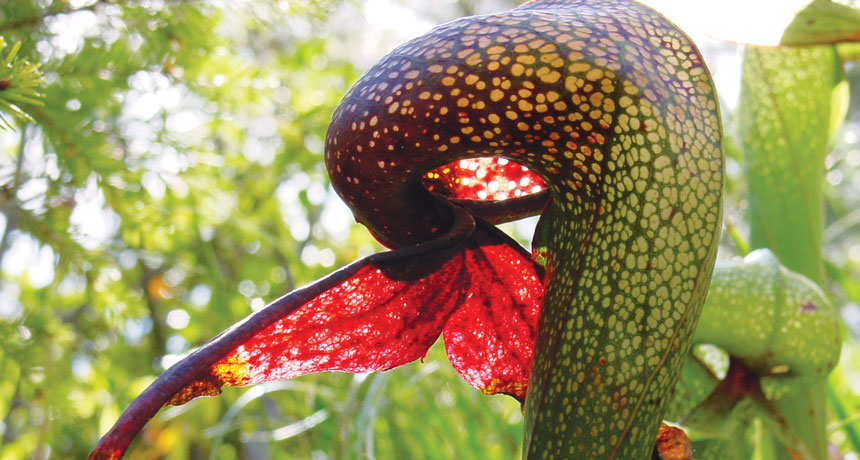Meat-eating pitcher plants raise deathtraps to an art
Green carnivores hunt with scum and sweets

FANCY FRILLS Scientists thought the red-veined forked frill that grows at the mouth of a California pitcher plant’s water trap was an insect lure, but now they’re not so sure.
NoahElhardt/Wikimedia commons (CC BY-SA 3.0)








